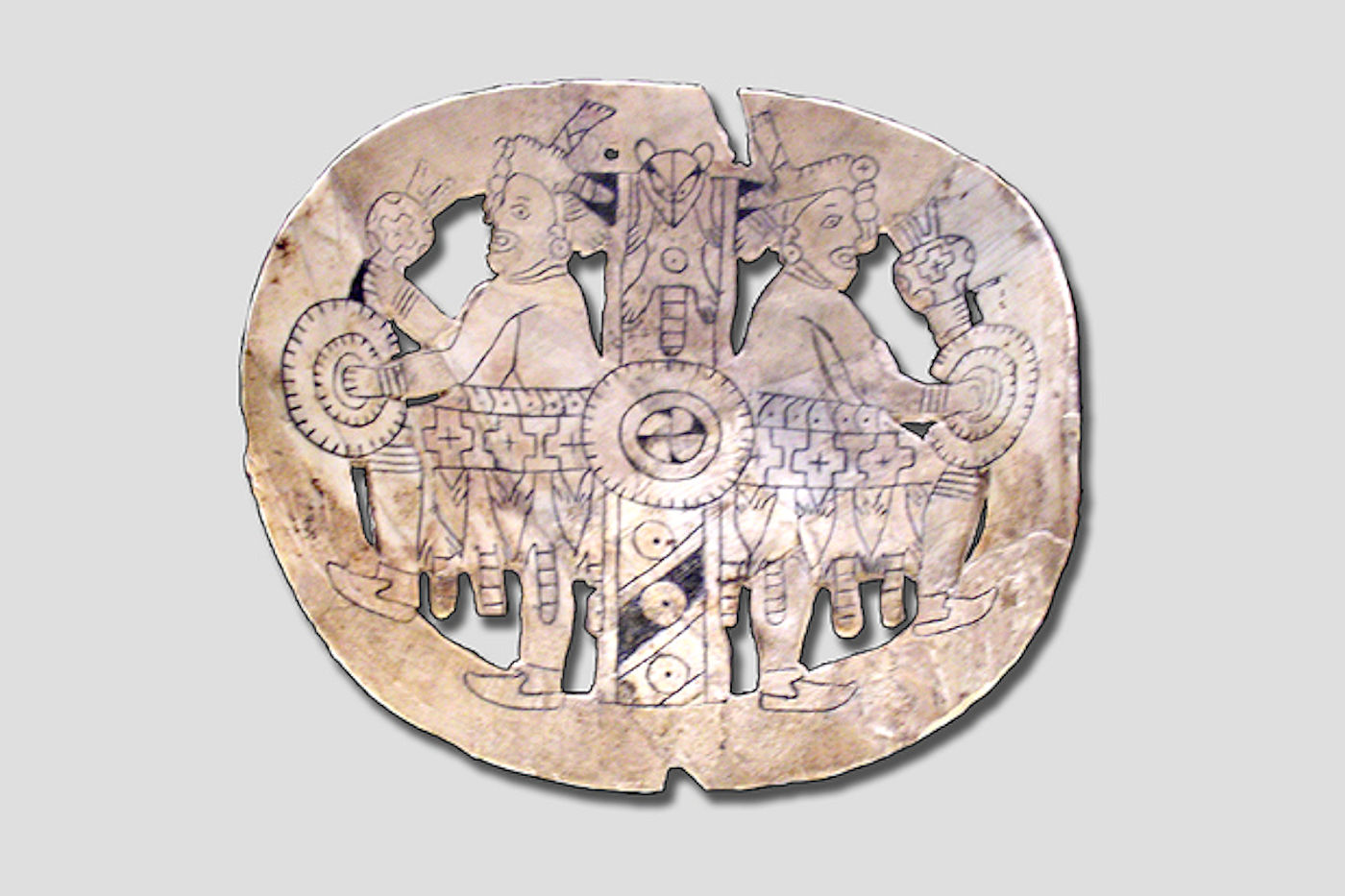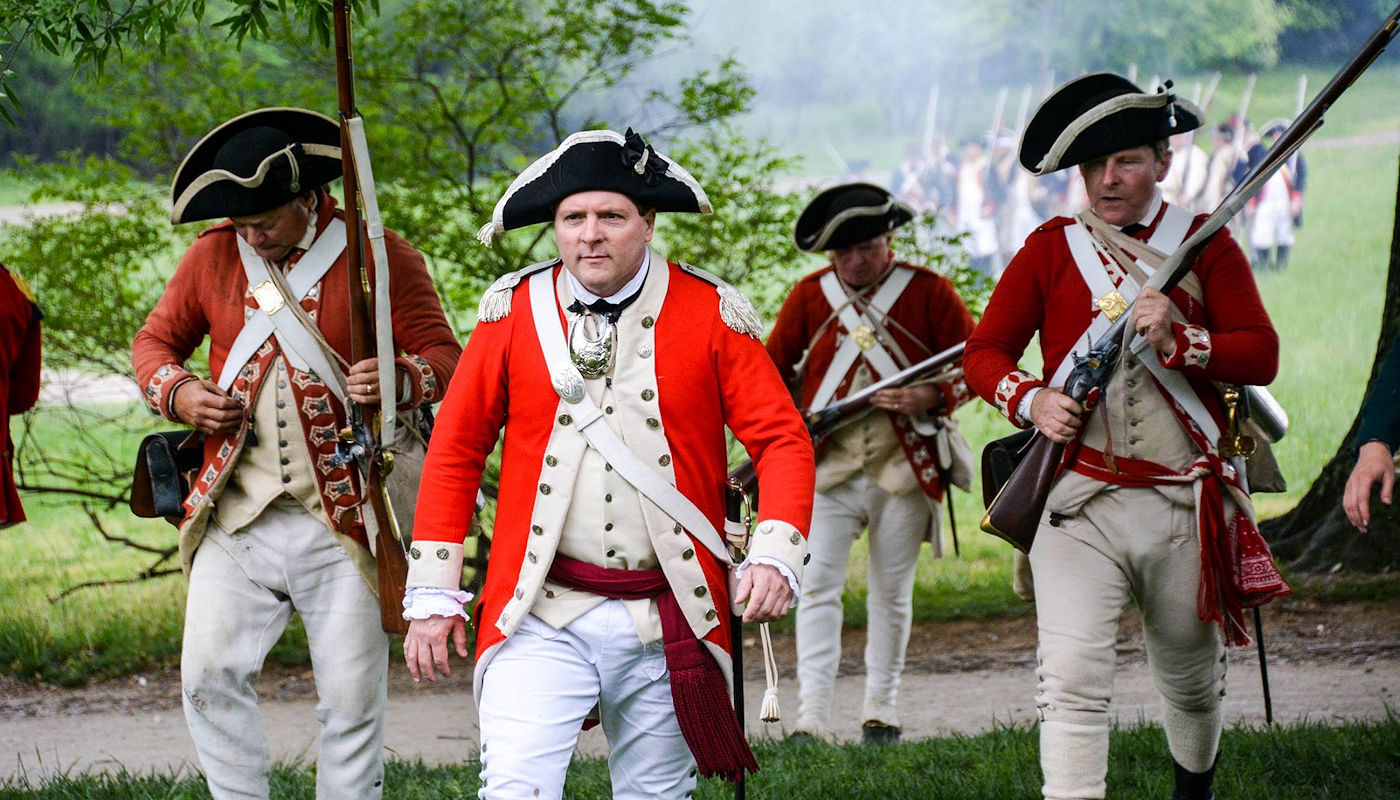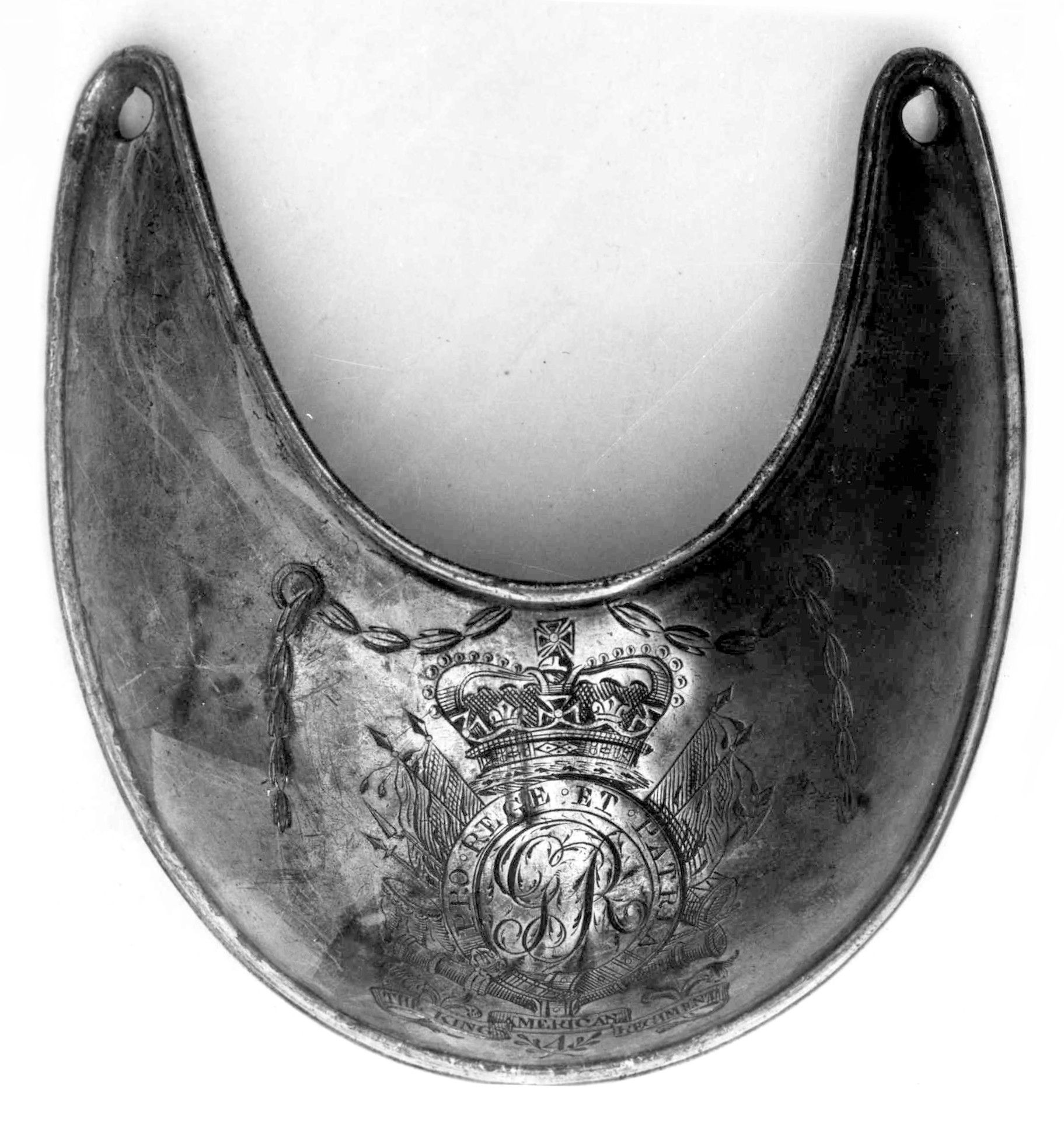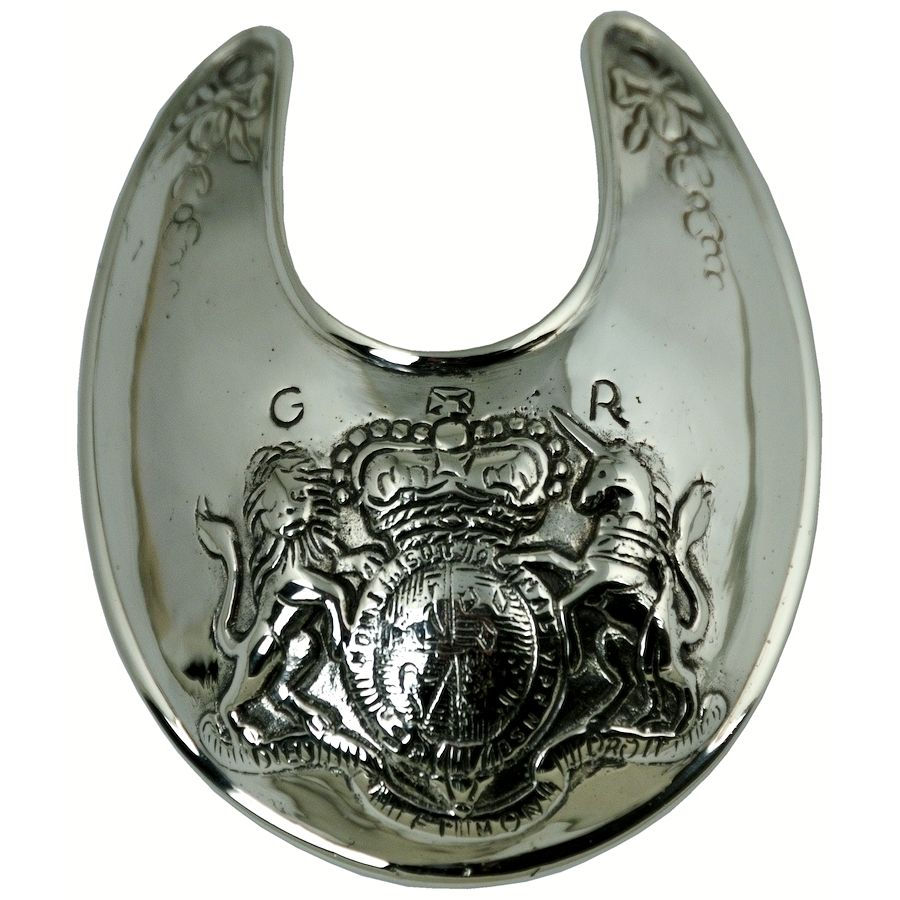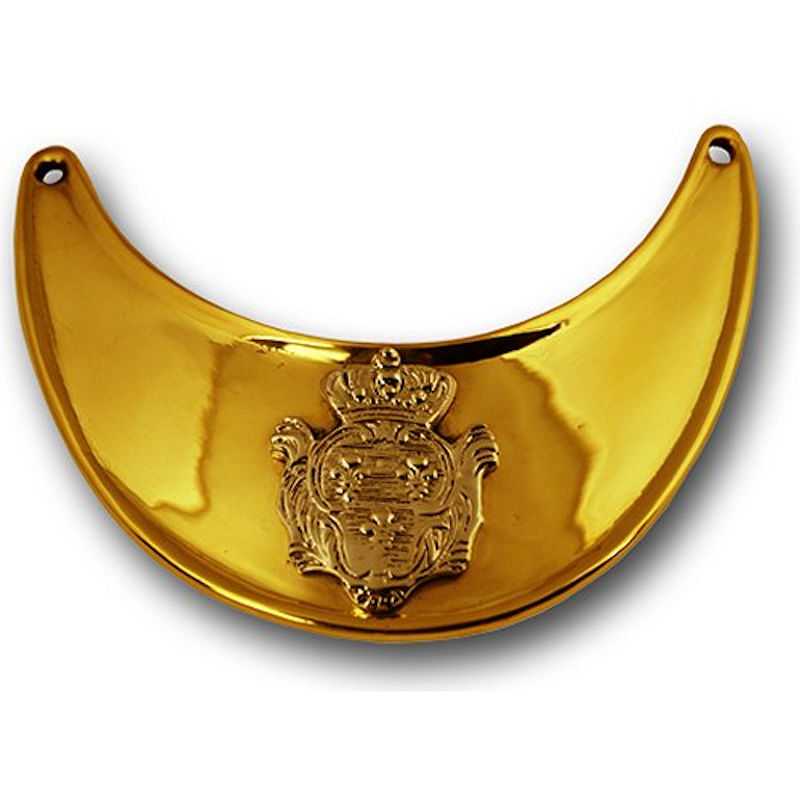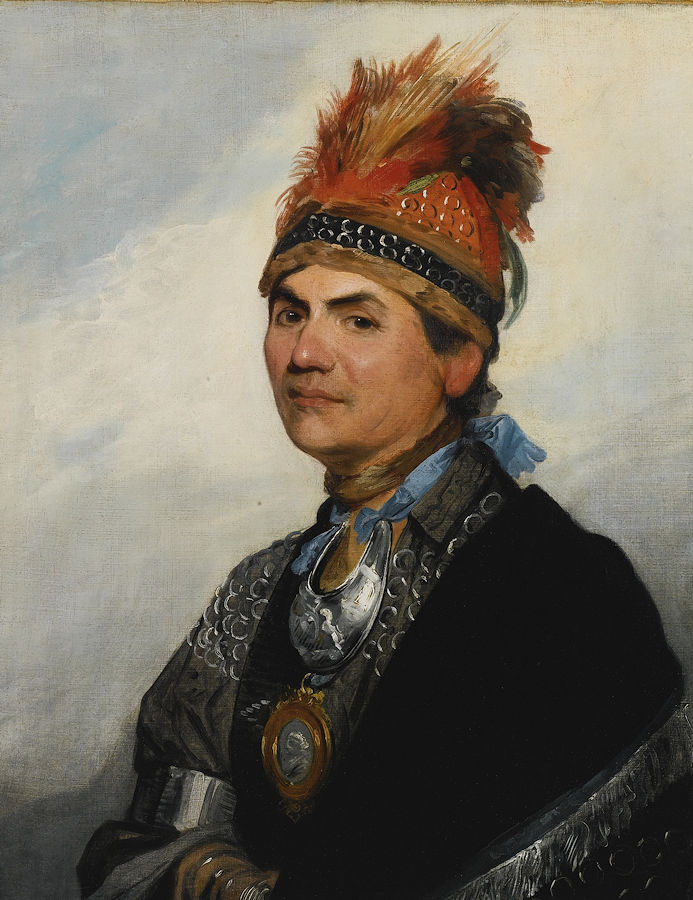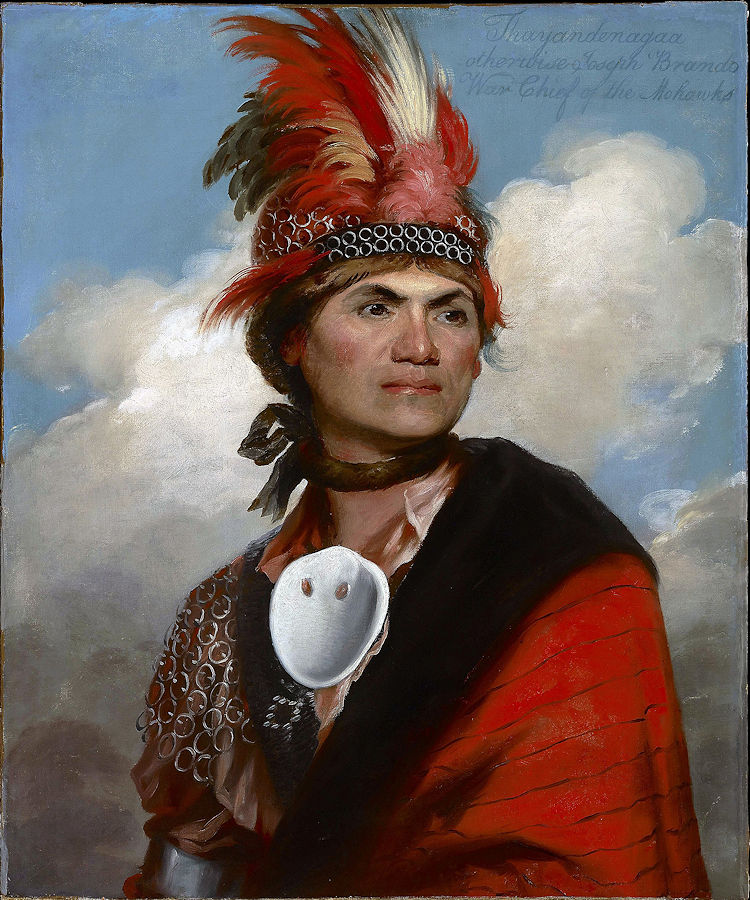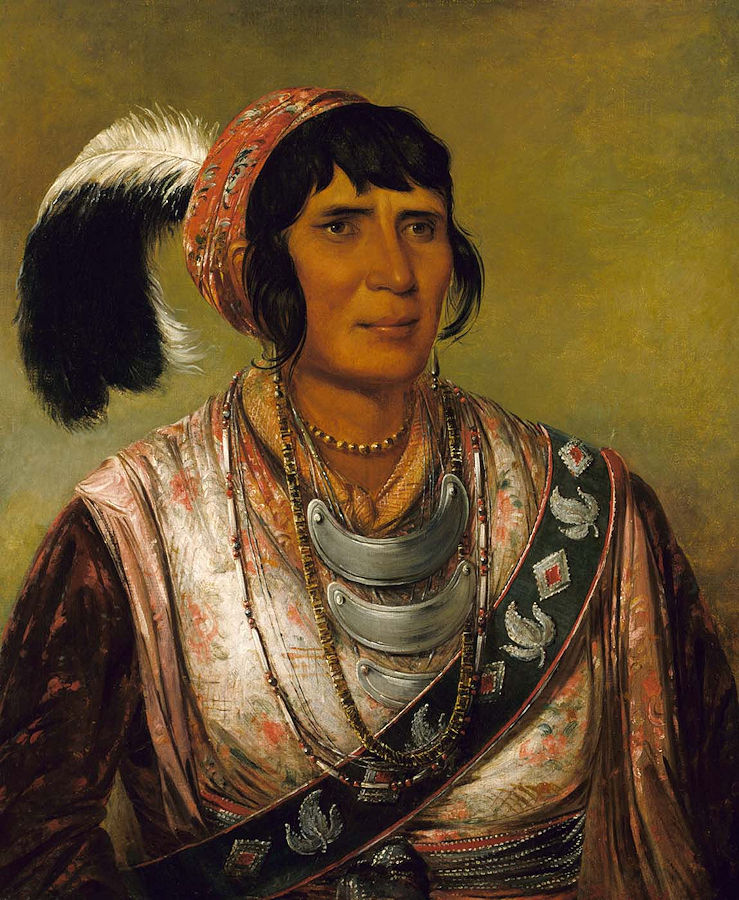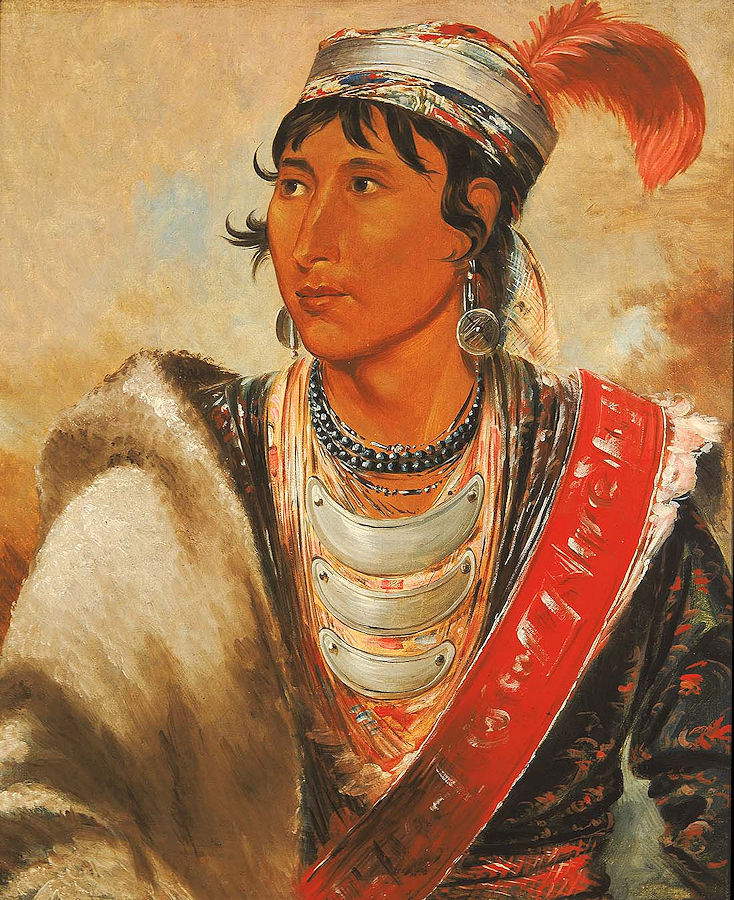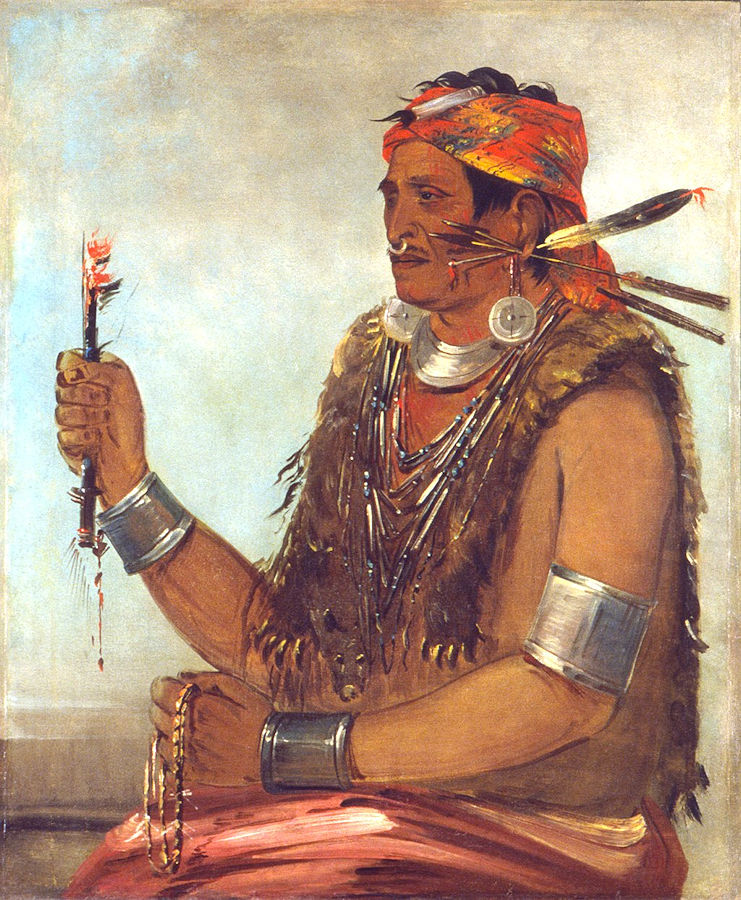

History of European Gorget as Native American Trade Items
By Crazy Crow Trading Post ~ April 9, 2023
Credit Above 3 Photos: George Catlin and William Tate 1781 and George Catlin, Public domain, via Wikimedia Commons
History of European Gorget as Native American Trade Items
By Crazy Crow Trading Post ~ April 9, 2023
Credit Above 3 Photos: George Catlin and William Tate 1781 and George Catlin, Public domain, via Wikimedia Commons
European Gorget Origins
In Europe, a gorget (from the French ‘gorge’, meaning throat) referred originally to a band of linen wrapped around a woman’s neck and head in the medieval period or the lower part of a simple chaperon hood.[1][2] The term was later used to describe a steel or leather collar to protect the throat, a set of pieces of plate armour, or a single piece of plate armour hanging from the neck and covering the throat and chest.
During the 18th and early 19th centuries, crescent-shaped gorgets of silver or silver gilt were worn by officers in most European armies, as a badge of rank and an indication that they were on duty. These last survivals of armour were much smaller (usually about three to four inches in width) than their Medieval predecessors and were suspended by chains or ribbons. In the British service they carried the Royal coat of arms until 1796 and thereafter the “Royal Cypher”. Gorgets ceased to be worn by British army officers in 1830 and by their French counterparts 20 years later. They were still worn to a limited extent in the Imperial German Army until 1914, as a special distinction by officers of the Prussian Gardes du Corps and the 2nd Cuirassiers “Queen”. In Sweden as early as 1688, regulations provided for the wearing of gorgets by army officers. This practice was discontinued as a rank insignia in the Swedish Armed Forces in 1792, when epaulettes were introduced.
Credit Above Photo: Wolfgang Sauber,CC BY-SA 3.0, via Wikimedia Commons
Click to enlarge.
Credit Above Photo: Herb Roe,CC BY-SA 3.0, via Wikimedia Commons
Click to enlarge.
Gorget Use in Pre-Columbian America
In the Americas the earliest use of gorgets (as an ornament to be hung about the neck to indicate rank or status) have been found at archaeological sites of various ages associated with mound building cultures of Eastern North America, going back thousands of years. These early gorgets were made of shell, as well as stone or copper.[3] While it might be a ‘stretch’ to claim that this created a pre-disposition for Native American tribes to adopt the shiny metal versions offered as trade by Europeans simply to ‘upgrade’ their existing shell gorgets in the same way that metal tomahawks replaced stone or wooden clubs, it would only have made their adoption more likely.
Gorget Transition from Rank Insignia to Symbolic Use to Trade Item
By the 18th century the gorget had gradually grown smaller and more symbolic, becoming a single crescent shape worn on a chain which suspended the gorget ever lower on the chest, so that the gorget no longer protected the throat in normal wear. At this point the gorget became primarily ornamental (as those used for trade items to Native Americans), serving as a symbolic accessory on military uniforms, a use which has survived in some armies. These gorgets can be seen in numerous paintings of military men of all nations in the American colonial era, including George Washington.
Credit Above Photo: Metropolitan Museum of Art, CC0, via Wikimedia Commons
Click to enlarge.
Credit Above Photo: Crazy Crow Trading Post Reproduction Nickel Silver Gorget w/Engraved Crest ca 1780 British Officer’s Gorget
Click to enlarge.
Credit Above Photo: Crazy Crow Trading Post Brass Gorge with Nickel Silver Cypher ca 1780 British Officer’s Gorget
Click to enlarge.
Gorget Trade to Native Americans
The British Empire awarded gorgets to chiefs of American Indian tribes both as tokens of goodwill and a badge of their high status.[4] Those being awarded a gorget were known as gorget captains [5]. These gorgets can be found in numerous paintings of Native American of the era. Over time, metal gorgets became prized trade items and part of Native American Regalia in many parts of the Eastern United States.
Credit Above Photo: Gilbert Stuart, Public domain, via Wikimedia Commons
Click to enlarge.
Credit Above Photo: New-York Historical Society, Public domain, via Wikimedia Commons
Click to enlarge.
Credit Above Photo: George Catlin, Public domain, via Wikimedia Commons
Click to enlarge.
George Catlin & Other Artists Portray Native American ‘Trade Gorgets’
Among the most well-known of these artists, George Catlin set out in 1830 to capture on canvas “every tribe of Indians on the Continent of North America” before their way of life was wiped out1. As part of this work, he painted Seminole warrior Osceola at Fort Moultrie, near Charleston, South Carolina, in January 1838. When Catlin painted Osceola, the Seminole leader was extremely sick and worn down from his enprisonment. Catlin had just come from Fort Moultrie, South Carolina, where he met and painted portraits of the Seminole Indian leaders Osceola, Micanope, Yehowlogee and Neamathla. Catlin also painted Láh-shee (also known as Creek Billy), describing him as “a half-breed warrior” and “a very handsome fellow.” He painted Creek Billy at Fort Moultrie, near Charleston, South Carolina, in January 1838, along with other Seminole warriors imprisoned there (although he is not mentioned as part of the group of Seminole leaders). In these paintings, both Osceola and Láh-shee are shown wearing three metal gorgets that look very similar.
Credit Above Photo: George Catlin, Public domain, via Wikimedia Commons
Click to enlarge.
Credit Above Photo: George Catlin, Public domain, via Wikimedia Commons
Click to enlarge.
Credit Above Photo: George Catlin, Public domain, via Wikimedia Commons
Click to enlarge.
Author’s Note: In searching for information about Lah-shee, he did not come up initially with other ‘Seminole’ leaders, chiefs, etc. Assuming one of the names he was known by (Creek Billy) might infer he was of Creek lineage, the search was modified and a result found. This is consistant with the description of the Seminole in general as having originated from natives of other tribes such as the Creek or Muskogee Creek who migrated to Florida from other regions of the Southeast as it came under control of the English and then the Americans. Florida at that time was loosely under control of a diminishing Spanish empire and would put them out of the reach of the American military until America gained control of Florida.
Gorget History & General Resources
- 1Norris, Herbert (1999). Medieval costume and fashion. Mineola, N.Y.: Dover Publications. pp. 181. ISBN 9780486404868.
- 2Lewandowski, Elizabeth J. (24 October 2011). The complete costume dictionary. Lanham, Md.: Scarecrow Press, Inc. p. 123. ISBN 9780810877856.
- 3Waldman, Carl (2000). Atlas of the North American Indian, Revised Edition. Illustrated by Molly Braun. Checkmark Books, An imprint of Facts On File, Inc. p. 22. ISBN 0-8160-3975-5.
- 4p.9 Handbook of North American Indians: History of Indian-White Relations Government Printing Office, 1978
- 5p. 286 Blegen, Theodore Christian & Heilbron, Bertha Lion Minnesota History Minnesota Historical Society, 1928
- 6Gorget – Wikipedia. Online resource.
- 7Gorget, Mississippian shell neck ornament (gorget), Dr. David W. Penney, National Museum of the American Indian, Smithsonian Institution & Dr. Beth Harris, Smarthistory, January 13, 2018, accessed April 10, 2022. Online resource.
- 8Ancient Native Americans were among the world’s first coppersmiths, David Malakoff, March 21, 2021. Online resource.
- 9The Primitive Copper Industry of America, George Brinton Phillips , American Anthropologist, June 27, 1925. Online resource.
Rendezvous & Historic Reenactment Articles
Rendezvous & Historic Reenactment Resources
Current Crow Calls Sale
March – April
SAVE 10%-25% on popular powwow, rendezvous, historic reenactor, bead & leather crafter supplies. Save on many of our most popular items such as Colonial Clothing: Waistcoats, Knee Breeches & Frockcoat, Missouri River Deluxe Hunting Bags, Readymade Drumsticks, Powwow Drums, Hand Drum Kits, Smoked Color Buckskin, Bison Leather, Trekker Boots and other Colonial Shoes for men and women, Jingles & Lids, Stainless Steel Blades with Guards, Polished Steer Horns, Oval Chevron Beads, Lance Heads, River Cane Flute, Plains Hard Sole Moccasin Kits, Southwest Shoulder Bags, Traditional Serapes, Beaded Cinch Top Bag, Beaded Backpack & more!.


